IndiaWilds Newsletter Vol. 10 Issue I
ISSN 2394 – 6946
Wildlife Population Control?
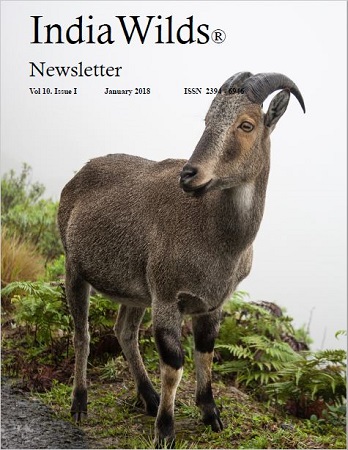
IndiaWilds Newsletter-January-2018
Contraceptives to be developed for monkeys, elephants, wild boars and blue bulls
Indian policy makers never fail to amaze us either by their inaction or by their strange logic of attacking the symptoms rather than removing the root cause of a problem. To continue with their tradition of taking absurd decisions, the MoEF&CC has asked the WII (Wildlife Institute of India) to develop contraceptives for wild animals, primarily monkeys, elephants, wild boars and blue bulls. This is completely wrong philosophically, morally as well as scientifically.
The ministry’s decision smacks of complete ignorance of the ground reality. Farmers as well as politicians in several states have been raging a war against wildlife and the NDA Government at the centre has in the past happily agreed to be a part of it. Wild animals like wild pigs, nilgai or blue bulls, rhesus macaques have been declared as vermin and have been killed. Carnivores like leopards and tigers have been declared as threat to man and have been killed. The Government officials in many states are hand in glove with the hunting lobby and regularly a few selected shooters are hired to carry out the mass murder. This contraceptive idea is another move to completely eradicate wildlife.
Some of the states like Himachal Pradesh and Uttarakhand have been complaining about the monkey menace as these monkeys feed on the apple orchards and other fruit bearing trees.
Effectiveness of Sterilisation Practices:
The Himachal Pradesh Forest department has been sterilizing the rhesus macaque since 2006 and is supposed to have already sterilized 1,25,266 macaques till the FY 2016-2017 ie till end of March 2017. Till January 14th 2018, a total of 136216 macaques have been sterilized. The HP Forest department also says that the number of macaques have come down from 3,17,512 in 2004 to 2,07,614 in 2015.
The HP Forest department says “The impact of monkey sterilization programme in stabilizing the monkey population is now visible in many pockets of the State. The full impact of sterilization on monkey population shall be discernible in future when sterilization of considerable monkey population shall be achieved at the current pace of sterilization.”
Himachal Pradesh has been sterilizing macaques since 2006, so why did they ask for killing macaques? Infact, their request to declare macaques as vermin was rejected by MoEF in March 2014. Soon after the change in Government at the Centre, Himachal Pradesh again asked for declaring macaques as vermin so that they can kill them. It is ironic that the new Government at the Centre is supposed to be champions of India’s ancient religion, which reveres the monkey God Hanuman. Unfortunately, in 2016 the NDA Government in the centre agreed to the Himachal Pradesh petition to declare macaques as vermin and kill them in 38 tehesils of 10 districts of Himachal Pradesh.
On one hand the Himachal Pradesh claims that the sterilization programme is effective and on the other hand it is declaring the rhesus macaques as vermin and murdering them. So clearly the sterilization programme is not working. So that means we can conclude that either the Sterilisation project is ineffective or there is huge corruption and the numbers are just cooked up. Either way it is not good news. So if our MoEF&CC would have given a cursory glance to the Himachal Pradesh monkey situation, then they would not have talked about simply sterilizing monkeys.
There have been many questions raised about the monkey sterilisation programme of HP Forest department. The Himachal Pradesh Government had raised the price for catching monkeys from Rs. 500/- to Rs. 750/- per monkey. Untrained people are engaged in it so that the monkeys face injury to their face and tails and there is hardly any veterinary care for these monkeys. Due to lack of ultrasound, even pregnant monkeys are sterilised. No standard protocol is followed in the sterilisation programme prompting the Animal Welfare Board of India to ask for stopping of the programme in one of its communications in 2015.

Sterlization Process at MSC Salappar
The HP Government seems to have incurred huge costs in the sterilisation programme. According to the HP forest department official data from their website the infrastructure cost is Rs. 15.65 crores and the recurring costs for sterilising 10,000 monkeys is 19 crores (till 2012). Though several sources talk of corruption, it is not officially probed by any agency. Nevertheless, the Ministry of Environment, Forests and Climate Change should have evaluated this programme with a fine comb to see if the sterilisation programme needs to be continued. Nevertheless, the officials are now of the view that creating an oral contraceptive would be better to administer without capturing the monkeys, so that at one go every monkey can be sterilised and their species locally exterminated.
Why Man-Animal conflict?
The ministry has failed to look at the causes of man-animal conflict. Traditionally farmers were supposed to lose some amount of crops to herbivores raiding their fields. However, these days they claim that more than 50% of their crops are destroyed. Farmers say that nilgai’s, wild pigs, elephants and monkeys completely destroy their crops. It is to be noted that in most of these areas, the habitat of wild animals have been completely destroyed. The hills are denuded due to tree cutting, removing rocks for building houses or roads. There have been massive illegal occupation of the hills and forest as well as non-forest land which earlier had vegetation cover. This has completely reduced the habitat available for wildlife. To compound their problems, most of these areas have huge problems of invasive weeds like Lantana camara growing and throttling the native vegetation. This has completely reduced the species diversity in these areas and the herbivores are forced to come out of the forests.
People too have moved and occupied lands close to forests. Hitherto unclaimed fallow lands are also now cultivated by people. Due to massive population explosion, people need more space. The livestock population in India has also gone up manifold further increasing the pressure on the herbivores. In 1951, the total livestock population in India was 292.9 million. In 2012, the livestock population has gone up to 512.1 million. With such massive increase, many more livestock compete with the wild herbivores. The human population too has increased a lot. The reality is there is no place for such a massive population. Even if there is land to fulfil the needs of people, there is no land to fulfil the greed of people. Rampant concretisation to construct houses, farm houses, hotels etc have resulted in even further shrinking of the habitat of wildlife and brining more people into conflict.
Traditional communities were used to living cheek-by-jowl with wildlife. They knew the ways of wildlife and used to take precautions accordingly. Today, the level of tolerance and understanding has gone down because a lot of people from outside with no prior knowledge of wildlife are settling down in these areas. So whenever they sight a carnivore they panic. And when they sight an herbivore, they think of hunting it for its meat. Accordingly most of the carnivore population have been hunted down. When a place loses it carnivores like leopards, wolves, hyenas, jackals etc, the natural predation of herbivores is lost. So there is no natural check and balance of herbivore population. So a farmer may suddenly see numerous wild pigs destroy its crops. In presence of lesser carnivores like jackals, wolves and hyenas, the piglets would have been predated upon maintaining a balance of the population.
There was a time when sighting a jackal, hyena and even wolves around villages was common. Today much of our forests as well as rural landscapes are devoid of wildlife. The Government has to undertake landscape level studies to assess and create sufficient protected areas around our human habitations with corridors for carnivores to move around so that natural checks and balances are restored.
We have to also keep in mind that we humans have completely failed at controlling our own population. In 1951 Census, India had 36.1 crore. It spiraled out of control to 121.01 crores in 2011 census and is now higher than 130 crores. “Billy” Arjan Singh had said “man has arrogated to himself the task of adjusting the wildlife population to the forage available in a given area. In these days of habitat reclamation for human use, this places an unwarranted onus on the human species, which, as we have already seen, is singularly unqualified to deal with population control.”
The ultimate creator in his infinite wisdom had created many species with checks and balances. Man with his limited knowledge can’t suddenly stand up and breakdown the pillars in a whimsical manner without pulling down the entire edifice on his head and perishing in the process. We have to forget the short term measures like research on new sterilisation methods and focus on long-term creation of a habitat suitable for co-existence of man and fellow animals.
Conservation News:
Wild Buffaloes sighted in Kollamarka:
A herd of five wild buffaloes were reported to have been sighted in Madhya Pradesh. It is very good news because Wild buffaloes (Bubalus arnee) are extremely endangered.
In the neighbouring Udanti Wildlife Sanctuary of Chhattisgarh, a female wild buffalo has been kept in an enclosure and was allowed to mate with free ranging wild buffaloes. Now she has six offspring, five of whom are males. Two free ranging wild buffaloes in Udanti have been radio collared in March 2017 to know about their movements. About 10-12 wild buffaloes had been sighted in Udanti in 2013 and there have been intermittent sightings ever since.
The wild buffaloes of Kaziranga in Assam, have bred with the domestic buffaloes and don’t have genetic purity. The population of Wild buffaloes of Manas have been wiped out during the Bodo insurgency. So it is very important to retain the genetically pure wild buffaloes in Central India. Unfortunately Central India has been beset with the left-wing extremism. So it is difficult for the forest department to carry out surveys without fear. The forest department is often a mute spectator to illegal tree felling and hunting of wild animals. In his book “A Life With Wildlife, From Princely India to the Present” M. K. Ranjitsinh had written about the possibility of Kollamarka Reserve having Wild Buffaloes. “The Kollamarka Reserve across the Indravati river in Maharashtra provides the only hope for the survival of the wild buffalo in peninsular India, as the Udanti population is, perhaps, beyond redemption in the wild, as of now.”
This prediction has now come true. During the tiger census in January 2018, these five wild buffaloes were directly sighted in Kollamarka Conservation Reserve. Kollamarka is in Sironcha division of Gadchiroli, which is majorly affected by left-wing extremism. These wild buffaloes were sighted in Penkasa near Indravati river. This is the first time geo-tagged images of the wild buffaloes were clicked. Earlier, hoof marks were found and estimation of wild buffalo numbers were only based on indirect signs. In 2009, two wild buffaloes had been sighted in Madhya Pradesh.
The wild buffaloes have become extremely sensitive due to the disturbance and have even changed their normal nature of wallowing in the river. They are reported to be only drinking water from the river once a day and then moving away to dense forests to avoid danger. Hopefully a large population of wild buffaloes are still surviving and the population of these majestic animals can be revived.
Environment Ministry Launches a Regional Project to Tackle stubble Burning:
In a step which has been necessitated by the massive smog in Delhi-NCR for the past few years, the Ministry the Ministry of Environment, Forest and Climate Change has approved a regional project on ‘Climate Resilience Building among Farmers through Crop Residue Management’ under the National Adaptation Fund for Climate Change (NAFCC). The project was approved at the meeting of the National Steering Committee on Climate Change.
The first phase of the project has been approved at a cost of approximately Rs. 100 Crore for the States of Punjab, Haryana, Uttar Pradesh and Rajasthan. The project will leverage approximately three times the approved amount with contribution from the States as well as farmers.
The project not only aims to mitigate climate change impacts and enhance adaptive capacity, but will also counter the adverse environmental impacts that arise from burning. The project will be implemented following a phased approach. Initially, awareness generation and capacity building activities will be undertaken to encourage farmers to adopt alternate practices which would also help diversify livelihood options and enhance farmer’s income. A slew of technological interventions will be undertaken for timely management of crop residue in addition to effective utilisation of existing machineries.
Implementable and sustainable entrepreneurship models will be created in rural areas through upscaling successful initiatives and innovative ideas. “Based upon the performance in the first phase, the scope could be enhanced and more activities can be supported subsequently”, said Secretary, MoEFCC, Shri. C.K Mishra. Projects from Nagaland, Jharkhand and Uttar Pradesh were also approved at the meeting of the National Steering Committee on Climate Change. Despite limited budgetary provision, NAFCC has so far approved 27 innovative projects, covering vulnerable sectors like agriculture, animal husbandry, water, forestry among others, since its launch in 2015.
The problem of crop residue burning has been intensifying over the years, with Punjab, Haryana and Uttar Pradesh being the major burning hotspots. Increased mechanization, declining number of livestock, long period required for composting and no economically viable alternate use of residues are some of the reasons for residues being burnt in field. This not only has implications for global warming, but also has an adverse impact on air quality, soil health and human health.
MoEF takes up new plan for rejuvenation of major river water systems
India’s Ministry for Environment, Forests & Climate Change has made an announcement that it has taken up a new strategy for conservation and rejuvenation of major river water systems. This strategy takes into account the entire river basin, which is contributing its flow to the particular river stretch for conservation. This decision was taken at a meeting chaired by Union Minister for MoEF&CC on 24th January, 2018.
The Minister Shri Harsh Vardhan said that “the present strategy for conservation of rivers is limited only to tackling pollution load from domestic wastewater and regulation of industrial pollution. The new approach is a holistic one for rejuvenation of rivers, wherein water management and environment management are taken together for implementation to restore the lost ecology of the polluted stretches of the rivers”.
The Minister also said that a tentative action plan has been drawn up and “To begin with, we need to try it out on a few stretches in the country covering sub-basin or catchment area of river”. He also pointed out that independent institutions like IITs will be entrusted with the study for preparation and finalisation of river basin management and rejuvenation plan for nine selected stretches.
Since sewage into the selected river stretches is the most significant polluter, projects to treat it will be taken up immediately. Dr. Harsh Vardhan emphasized that under the conservation plans, sewage treatment will be made mandatory along the identified stretches. Since enforcement of provisions of the Water Act and Environment (Protection) Act comes under the local bodies in respective states, the Environment Ministry plans to set up a sewage management system with private participation.
Some of the other actions include watershed management, construction of small check-dams along the catchment area, scientific assessment of quantum of environmental flow in each stretch, rejuvenation of lakes and wetlands along the river basin and protection of floodplains from encroachment.
The Central Pollution Control Board had identified 302 river stretches on 275 rivers in the country as polluted, based on Bio-Chemical Oxygen Demand, a critical parameter of water quality.
Dr. Harsh Vardhan also took a decision to call a meeting of all five states at the earliest and work out an implementation plan for Ganga river basin at the earliest and also rope in the resources from CAMPA fund.
A detailed presentation on DPR on Forestry Interventions for Ganga was made by Director, Forest Research Institute. Appreciating the efforts of the FRI, Dr. Harsh Vardhan said that it is a comprehensive document covering all aspects of forestry interventions required, including past and present status of Ganga river and its environmental peculiarities. The project report prepared by FRI for Catchment area Treatment of Ganga river covers five states – Uttarakhand, Uttar Pradesh, Bihar, Jharkhand and West Bengal has an estimated cost of Rs. 2500 crore approximately. The need of the hour is to prepare a project for the catchments of all important rivers of the country and implement the same over a period of next 10 years. The ultimate mission is to make all the rivers clean and ensure adequate water in the river to flow.
It would be pertinent to mention that the Ganga Action Plan was first launched by the then Prime Minister Shri Rajiv Gandhi in the 1980s and still hasn’t borne any fruit. The Hon’ble Supreme Court has also pulled up the Government and the various State Pollution Control boards for not implementing the pollution norms due to corruption, it is to be seen if this present announcement by the MoEF&CC regarding new strategy for revamping major river systems is going to bear any fruit. India is fast losing its rivers and if we don’t act now, our rivers would be lost for ever.
2500 Government buildings to be fitted with super-efficient ACs:
The Central Government has decided to install super-efficient air-conditioners in 2,500 of its buildings for the first time in the country. This will entail replacing one lakh (100,000) conventional air conditioners by super-efficient ACs which will consume 30% less power. This was stated by the Union Environment & Forests minister Dr. Harsh Vardhan while launching the replacement of conventional lights with LED lights in East Delhi.
“Over 88 crore LED bulbs have been distributed across India, both by government and private agencies under the Mission Innovation scheme of the Prime Minister, Shri Narendra Modi. The procurement cost of these bulbs was Rs. 310/- in 2014, whereas it is procured at Rs. 70/- now,” the Minister said.
In East Delhi, the municipal agency will replace one lakh street lights and 2, 800 High Mast Lights with LED lights at “Zero cost”, thereby saving energy to the tune of 77.97% in comparison to the existing energy bills.
Dr. Harsh Vardhan also stated that India Government has made a commitment to shift to electric mobility by 2030 and hence will convert all automobiles to electric power by 2030.
India has committed to install 175 GW of solar, wind and biomass electricity by 2022, reduce emission intensity by 33-35% from its 2005 levels by 2030, create an additional carbon sink of 2.5 to 3 billion tonnes of carbon dioxide equivalent by 2030 though additional forest and tree cover and produce 40% electricity from non-fossil fuel based energy resources by 2030.
Book Review:
A Life with Wildlife – From Princely India to the Present
By M. K. Ranjitsinh
M. K. Ranjitsinh’s book “A Life with Wildlife – From Princely India to the Present” is a fascinating book and is thoroughly educational. Written in a first person account with the author as the protagonist, documenting the events happening around him from his Childhood in the Princely state of Wankaner to his working in the Government of India and UNEP and then post-retirement innings outside the Government trying to save Wild India, this book is lucidly written and also contains lot of gems that should be brought infront of the readers.
https://www.indiawilds.com/diary/a-life-with-wildlife-from-princely-india-to-the-present/
Equipment Discussions:
Hasselblad Launches 400 MegaPixel H6D-400C Multishot Camera:
Hasselblad has launched the 400 Megapixel H6D-400 camera. It also shoots 4k (UHD) raw video in Hasselblad’s proprietary raw format and records to dual CFast 2.0 cards. The USB 3.0 type C connector also allows for tethered shooting and 30fps live view operations.
According to Hasselblad the new H6D-400C is the highest resolution camera shooting the most colour accurate medium format images available on the market today. The 400MP image output coupled with real RGB colour data for each pixel, captures every subtle nuance of the subject whether you are capturing fine cars, artworks, delicate fabrics or diamonds, put simply where only the best reproduction is acceptable – the multi-shot image offers true colour and an astonishing moire free level of detail.
It is to be noted that the Hasselblad H6D-400C has a 100MP CMOS SENSOR, which is 53.4 x 40mm size. It has 15 stops of dynamic range, 16 bits colour data. So the 400 Megapixel images are because of the multishot technology.
The Multi-Shot technology involves moving the sensor very accurately by 1 or 1⁄2 a pixel at a time with a precision piezo actuator, enabling the camera to capture more colour information and data than in a single-shot capture. The captured images are then merged in Phocus, Hasselblad’s dedicated desktop software solution, to produce a single finished file with staggering amounts of detail and colour information. Multi-Shot capture does require tethering to a host computer, static subject, and controlled studio environment.
In traditional single-shot imaging, each pixel receives one level of colour information (Red, Green, or Blue) based on the Bayer Pattern filter. While this can produce high quality results, Multi-Shot capture adds a new dimension of image detail and colour possibilities.
In 400MP Multi-shot mode, 6 captures are made. The first 4 captures involve moving the sensor by one pixel at a time to achieve real colour data (GRGB- see 4 shot diagram below), this cycle returns the sensor to its starting point. A further two exposures are made moving the sensor by ½ a pixel horizontally and then ½ a pixel vertically (see 6 shot diagram).
These 6 captures are then combined to give the equivalent of a single 400MP capture, delivering a 16-bit Tiff file size of 2.4GB per frame (23200 x 17400 pixels), giving the ultimate in image resolution.
When shooting in 4-shot Multi-shot mode, four captures are made. The 4 captures involve moving the sensor by one pixel at a time to achieve real colour data (GRGB). The cycle moves the sensor 1 pixel horizontally, then 1 pixel vertically, then 1 pixel horizontally and finally 1 pixel vertically, this cycle returns the sensor to its starting point (see 4-shot image above).
This mode captures real RGB data for each pixel but the final output is a 100MP image size. The benefits are accurate colour data for each pixel, no moiré interference but keeps the resolution to 100MP. The 4 shot Multi-shot capture delivers a 16-bit Tiff file size of 579MB per frame (11600 x 8700 pixels).
The H6D-400c MS encompasses all the features and functionality of Hasselblad’s standard single shot cameras:
– USB 3.0 type c connection for tethered shooting, high speed data transfers & 30FPS live view
– Dual media card slots: CFast 2.0 and SD card
– 3.0-inch touch rear display – Smartphone style user interface
– HD & UHD video – Modular system with improved back removal process
– Technical camera connectivity (single shot)
– Wi-Fi – HDMI & Audio I/O
– Price: True Focus II The H6D-400c MS will begin shipping March 2018 with a MSRP of € 39,999 / $ 47,995 / £ 36,250 / RMB 319,999 / JPY 5,391,380 excl. VAT. Pre-orders have started from January 16th.
The H6D-400c MS will also be available to rent through your local Hasselblad sales representative. The rental fee is approx. @399/day for short term loans, but you can save up to 50% of that cost if you rent for a longer period, excluding shipping, insurance, and other rental service related fees.
Detailed Specifications:
Sensor type CMOS, 100 megapixels (11600 × 8700 pixels, 4.6 × 4.6 µm)
Sensor dimensions 53.4 × 40.0mm
Image size Stills: RAW 3FR capture 207MB on average. 4-shot Multi-shot & Single shot TIFF 8 bit: 289MB, 6-shot Multi-shot TIFF 8 bit: 579MB; Video: HD (1920 x 1080p), UHD (3840 x 2160p)
File format Stills: Hasselblad 3FR Video: H.264 Compressed (25 fps, HD only), Hasselblad RAW (25 fps, UHD)
Shooting mode Six & four shot Multi-Shot & Single shot stills, Video
Colour definition 16 bit; Dynamic range 15 stops
ISO speed range ISO 64, 100, 200, 400, 800, 1600, 3200, 6400, 12800
Storage options CFast card, SD card or tethered to Mac or PC
Colour management Hasselblad Natural Colour Solution
Storage capacity 16GB card holds 72 images on average
Display 3 inch TFT type, 24 bit colour, 920K pixels; Touch functionality: Yes, full support Live View: On camera, host and iOS device with high frame rate (30 fps)
IR filter Mounted in front of sensor
Acoustic feedback Yes
Software Phocus for Mac and Windows
Platform support Macintosh: OSX version 10.10; PC: Windows 7 (64 bit)/ 8 / 10
Host connection type USB 3.0 (5 Gbit/s) Type-C connector, Mini HDMI, Audio In/Out
Additional connections Mini HDMI, Audio In/Out, Flash sync In/Out, Power In
View camera compatability Yes, Mechanical shutters controlled via flash sync. Electronic shutters can be controlled from Phocus
Operating temperature – 10 ˚C to + 45 ˚C / 14 – 113 ˚F
Wi-Fi 802.11b,g. 2,4 GHz & 5.0 GHz
Dimensions Complete camera w/ HC80 lens: 153 x 131 x 205 mm [W x H x D]
Weight 2180 g (Complete camera w/ HC80 lens, Li-Ion battery and card)
Camera type Large sensor medium format DSLR
Lenses Hasselblad H System lens line with integral central lens shutter
Shutter speed range 60 minutes to 1/2000 sec (depending on lens type used)
Flash sync speed Flash can be used at all shutter speeds
Viewfinder options HVD 90x: 90° eye-level viewfinder w. dioptre adjustment (-5 to +3.5D). Image magnification 3.1x. Integral fill-flash (GN. 12 @ ISO100). Hot shoe for SCA3002-system flashes from Metz™ HV 90x II: 90° eye-level viewfinder w. dioptre adjustment (-4 to +2.5D) Image magnification 2.7x. Integral fill-flash (GN. 12 @ SO100). Hot shoe for SCA3002-system flashes from Metz™ HVM: Waist-level viewfinder. Image magnification 3.2x
Focusing Autofocus metering with passive central cross-type sensor. Ultra focus digital feedback. Instant manual focus override. Metering range EV 1 to 19 at ISO 100
Flash control Automatic TTL centre weighted system. Uses built-in flash or flashes compatible with SCA3002 (Metz™). Output can be adjusted from -3 to +3EV. For manual flashes a built-in metering system is available
Exposure metering Spot, Centre Weighted and CentreSpot Metering range Spot: EV2 to 21, Centre Weighted: EV1 to 21, CentreSpot EV1 to 21
DJI Launches Mavic Air:
DJI the consumer drone behemoth, which has also bought a majority stake in Hasselblad, has launched a new quadcopter. The Mavic Air is like the Mavic Pro launched earlier, but is smaller in size. This quadcopter is so small that one can fit it in a jacket pocket during a trek. It is only 430grams.
The Mavic Air is the most portable DJI drone to house a 3-axis mechanical gimbal, with its angular vibration range reduced to 0.005°. Set in a triangular formation, gimbal dampeners help create even steadier shots.
In addition to Horizontal, Vertical, and 180° panoramas, the Mavic Air stitches 25 photos together in just eight seconds to create crystal-clear 32 MP Sphere panoramas. One can view them from an immersive perspective with DJI Goggles.
From a quality point of view the most important specification in the DJI Mavic Air is that it shoots video at 4K (UHD) at 30 fps recording at 100 Mbps. The previous Mavic Pro used to record UHD video at only 60Mbps. With the higher amount of data, the files from the Mavic Air should theoretically look much better. The camera can be set from ISO 100 to ISO 1600.
The Mavic Air’s onboard camera integrates a 1/2.3”12-megapixel CMOS sensor and an f/2.8 lens with a35-mm equivalent focal length of 24 mm to shoot high-quality photos and videos.
In addition to a Micro SD card slot, the Mavic Air has got 8 GB of internal storage to save photos and videos and export files through its USB 3.0Type-C port.
Along with the foldable design of the Mavic Air drone, the controller is also foldable. So it folds for packing and unfolds to hold the smartphone. The detachable control sticks store inside the remote controller so that it can be packed comfortably.

Mavic-Air-foldable-controller
New HDR algorithms help you obtain the right exposure settings intelligently, according to lighting conditions. Overexposed or dark areas are processed for more natural transitions between highlights and shadows, while DSP acceleration allows for more efficient shooting.
The DJI Mavic Air comes with impressive technology. It has a seven camera vision system. So the Mavic Air can see in three directions. It can fly for a total of 21 minutes if flown at consistent speed of 25kmph and if there is no wind. The theoretical maximum flight distance without any wind is 10kms.
It has an internal storage of 8 GB.
The obstacle avoidance system known as the Advanced Pilot Assistance Systems used in the Mavic Air is upgraded and is better than the Mavic Pro. The 3D mapping system is supposed to help in ensuring that the Mavic Air flies over or around the obstacles. So while flying in dense vegetation, the Mavic Air should automatically avoid obstacles and fly. It has to be seen how this technology works in practice.

Mavic-Air-folded
The Mavic Air base price is $799 US dollars and the fly more combo with two more batteries and a charging hub will cost $999 US Dollars. The technology in the Mavic Air and the images shared by DJI promises a lot. However, we have to check it in hand to see if all the technologies works as promised and the video quality is better than Mavic Pro.
Yuneec Typhoon H Plus 4K Hexacopter
Chinese manufacturer Yuneec has launched the Typhoon H Plus Hexacopter with 4K camera. This hexacopter is claimed to have a top image quality combined with the reliability and automatic flight modes which every photo and videographer desires.

Yuneec-Typhoon-H-plus
The Typhoon H Plus hexacopter is equipped with a 1″ camera with 4K video resolution, a PX4-based flight controller and flight modes from Follow Me and Point of Interest to Curve Cable Cam. Relevant core areas of the Typhoon H Plus are now even more shielded against electrical influences and ensure a maximum reliability together with the PX4 controller and the 6-rotor design.
According to Yuneec they cleaned up the inside of the previous version- refined wiring ensures optimized air circulation and improved cooling. Through numerous optimizations, the new Typhoon H Plus is one of the quietest and most efficient hexacopters in its class and manages 25 minutes of flight time under normal weather and flight conditions. The redesigned ST16 remote control has a brighter display, an additional USB slot and a completely new intuitive user interface.
The supplied C23 camera is equipped with an endless 360° rotating gimbal as known from the Typhoon H series. The 1″ sensor captures photos up to 20 MP and videos up to 4K at 60 frames per second, has an improved low light output and an increased dynamic range.
Autonomous Flight Modes: The Typhoon H Plus has autonomous flight modes so that one can use those and focus on taking the shots without bothering about the technicalities of flying.
Orbit Me: The Typhoon H flies a circular path around you, keeping the camera trained on you the whole time.
Point of Interest: Select a subject and Typhoon H Plus will orbit that subject autonomously.
Journey: Typhoon H Plus will automatically go up and out, as far as 90 m, and capture the perfect aerial selfie.
Follow Me/ Watch Me: Follow Me ensures Typhoon H Plus moves along with you. Watch Me tells the H Plus to follow you while always pointing the camera at you wherever you go.
Curve Cable Cam: Easily program an invisible route for H Plus to fly along. The hexacopter will fly between pre-set coordinates while independently controlling camera position.
Return Home: Simply switch to Home Mode and the Typhoon H Plus will return and land within 8 m of you.
The Typhoon H Plus is available with and without the Intel® Real-Sense ™ technology. Thanks to 3D and depth-sensing technology, the RealSense™ system detects objects, movements and distances, allowing the drone to operate independently and effortlessly avoid obstacles in its surrounding. Obstacles and a safe flight route will be saved for the next time.
The Typhoon H Plus is accompanied by a newly redesigned Android-based ST16S controller, which includes a large, high brightness seven-inch integrated display and HD 720p video downlink for stunning real-time video reception.
Summary of Key Features:
- New flight controller based on PX4 with integrated backup and failsafe
- Optimized design for improved airflow and cooling as well as specially shielded core areas for increased reliability
- High efficiency and quiet flight operation
- Includes 1 “sensor camera with 20 MP and 4K video resolution at 60 FPS, improved residual light performance, dynamic range and a distorted horizon
- Includes redesigned ST16 remote control with improved display
- Including flight modes Orbit me, Point of Interest, Journey Mode, Follow me, Curve Cable Cam, Return home
- Available with and without Intel® Real-Sense ™ technology
- 5-rotor mode to compensate a motor failure
- No data transfer to external server
Cost: 1800 US Dollars and will be released in the first half of 2018.
Canon launches world’s smallest and lightest 4K projector, the XEED 4K600Z
Canon has launched the XEED 4K600Z, a compact, bright and higher-than-native 4K, LCOS, laser phosphor projector. With a native 4K resolution of 4096 x 2400, specialised Canon optics with LCOS technology and AISYS enhancement, the XEED 4K600Z creates an immersive experience with crisp detail and true-to-life colour covering the sRGB colour space.
It also has minimal field curvature for distortion free images, motion blur reduction and super-fast response times (1.0 frame delay). Pin sharp focus can be maintained in a range of environments, including when projecting onto domed or curved surfaces.
This compact projector has 6,000 lumens to project a premium quality and clear image, making it perfect for professional environments such as simulation, design, education, creative installations and digital signage.
Standard throw lens:
The XEED 4K600Z features a standard throw lens with a throw ratio of 1.3-2.3:1. This makes it ideal for installations requiring 40”-600” screens with a projection distance of 1.2-30.9m. This compares to the 4K600STZ with its throw ratio of 1.0-1.3:1 for projection distances of 0.9-17.7m, giving a choice of two options depending on requirements.
Greater than native 4K resolution
Offering a resolution of 4096x2400px, the 4K600Z provides greater than 4K projection resolution for incredibly detailed renderings. In environments such as flight simulation and driving simulation, it provides a higher level of reality for a more immersive experience. Combined with low latency playback, reduced motion blur (with 60Hz playback) and the ability to project on curved surfaces, the learning experience is more in-depth and effective.
LASER Phosphor
Using a combination of LASER diode and yellow phosphor, the 600Z offers a long lifetime with high reliability and exceptional colour reproduction. The Blue LASER diode combined with phosphor technology of the reflective fluorescent wheel and Canon’s unique, highly efficient compact light source AISYS optical system delivers a brightness rating of up to 6,000 Lumens.
Unlike with a high-pressure mercury lamp, that element is not used, meaning the 4K600Z is a more environmentally friendly solution too.
Being a LASER light source, it can be run 24/7 and offers a lower total cost of ownership than other lamp light sources because it is near maintenance free. It can also be mounted to project in portrait orientation to suit many digital signage uses, unlike more traditional lamp technologies that must be mounted horizontally.
Summary XEED 4K600Z key features:
- Higher-than-native 4K resolution (4,096 x 2,400 pixels)
- 6,000 lumen brightness
- Lightweight (26 kg), compact (559mm x 201mm x 624mm) chassis
- 360° orientation, with landscape and portrait modes
- Wide colour gamut, meeting the sRGB colour standard
- 76x motorised zoom lens
- 4K LCOS technology for smooth, seamless imaging
- Vivid colour production with 4000:1 native contrast ratio
Natural History
COUNTRY NOTEBOOK: M. Krishnan: ‘Jackal‘ By Saktipada Panigrahi
https://www.indiawilds.com/forums/showthread.php?8852-Country-notebook-m-krishnan&p=84781#post84781
The Hunt sequence of the Velvadar Wolf
Wildlife Photography
Leopard in Habitat by Jerin Dinesh
https://www.indiawilds.com/forums/showthread.php?18608-The-Big-Male-leopard-in-his-habitat
Leopard in Kabini by Shyamala Kumar
https://www.indiawilds.com/forums/showthread.php?18615-Don-t-Look-Back!!
Otters by Rajan Kanagasabai
https://www.indiawilds.com/forums/showthread.php?18598-Otters
Killed Jungle Cat by Sandipan Ghosh
https://www.indiawilds.com/forums/showthread.php?18602-A-Great-Loss-Safe-Driving-Save-Wildlife-!
Porcupine by Prabir Chakraborty
https://www.indiawilds.com/forums/showthread.php?18595-Porcupine
Barn Swallow by Joydip Mukherjee
https://www.indiawilds.com/forums/showthread.php?18607-Barn-Swallow
Purple Sunbird by Jitendra Katre
https://www.indiawilds.com/forums/showthread.php?18601-The-pollinator
Sea Anemone by Prajwal Ullal
https://www.indiawilds.com/forums/showthread.php?18589-The-tentacles-of-the-shore
Jewel Beetle by Anil Kumar Verma
https://www.indiawilds.com/forums/showthread.php?18584-A-Jewel-from-Yeoor
Crab spider with Katydid nymph by Prajwal Ullal
https://www.indiawilds.com/forums/showthread.php?18590-The-grip-of-death
With this issue we start our 10th year of uninterrupted publication. I look forward to your inputs and support in preserving the last tracts of wilderness and wildlife left in our beautiful country and raising awareness about it. For other interesting articles and images check –
http://www.indi
To post in the IndiaWilds forums, you can register free of cost using your Full Name as user id at:
http://www.indiawilds.com/forums/register.php
If you are already a member of IndiaWilds and have forgotten your user id and/or password you can mail to:
administrator@indiawilds.com
If you want to contribute original articles, or for any image enquiries please send a mail to:
administrator@indiawilds.com
Regards,
Sabyasachi Patra
Profile | Contact Us | Facebook | Diary | Equipment reviews | Forums | IndiaWilds You Tube Channel
Please post your views and feedback in the comments below.
- GoPro Hero 12 Black - 6 September,2023
- Leopards: The Last Stand - 2 July,2023
- Drifting in the Waters of Sundarbans - 26 March,2023


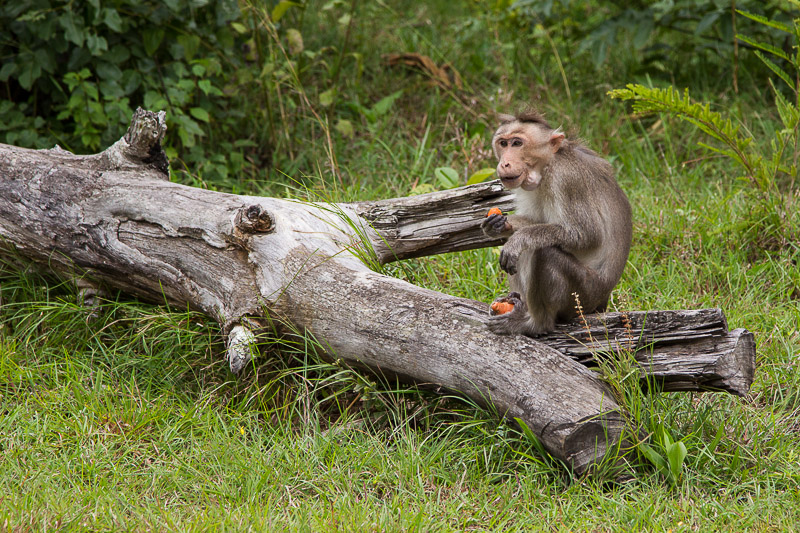
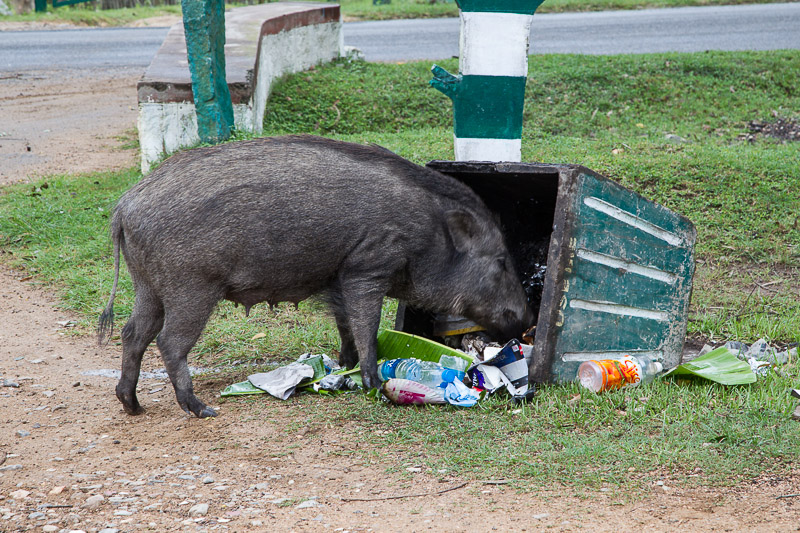




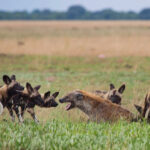
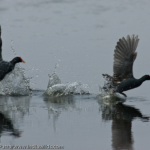
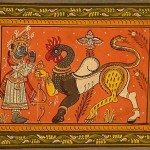

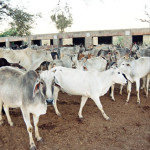




Leave a Reply